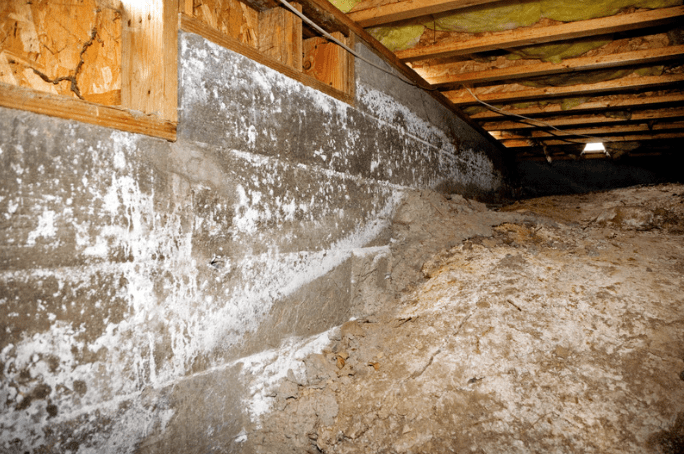A dehumidifier can make a damp basement feel less sticky and musty, but if you’ve been running one nonstop and still dealing with moisture, you’re not imagining it. A dehumidifier only treats the symptom, not the source. Basements have many ways for water and humidity to get inside, and until that part is solved, a dehumidifier will keep working overtime without truly fixing anything.

What a Dehumidifier Can Actually Do
A good unit will help:
- Reduce humidity in the air
- Slow mildew and musty odors
- Make the space more comfortable
- Protect belongings from dampness
But it won’t stop water from entering. If moisture is coming from the soil around your foundation, a leak, or condensation from poor airflow, it’s not solving the real problem.
The Most Common Reasons It’s Not Working
1. Water Is Entering Through the Foundation
If you see:
- Water along wall-floor joints
- Damp carpet or wet spots after storms
- Crumbling or flaking concrete your issue may be seepage, not just humidity. Cracks, hydrostatic pressure, and clogged drainage systems can force water inside. A dehumidifier can’t stop any of that.
2. Poor Air Circulation
Basements often trap humid air because they don’t get the same airflow as the rest of the home. When that air can’t move, moisture lingers on cool surfaces like concrete walls and floors, creating condensation. A dehumidifier helps, but you may still have damp walls.
3. The Source Is Outside, Not Inside
Outdoor issues can introduce moisture:
- Improper grading that pushes water toward the house
- Downspouts dumping water next to the foundation
- Mulch beds or landscaping holding moisture against the walls Fixing water management outside can make a bigger difference than adding another appliance indoors.
4. Your Dehumidifier Isn’t Sized Correctly
Basements often need a larger capacity unit than people expect. If you bought one designed for a bedroom or small living space, it may be underpowered and unable to keep up.
Signs Your Moisture Problem Is Bigger Than Humidity
Pay attention if you notice:
- Musty, earthy smells that return quickly
- Visible mold growth
- Rusting appliances or tools
- Efflorescence (white powder) on concrete walls
- Peeling paint or bubbling drywall These typically indicate water intrusion, not just humid air.
What Actually Fixes Moisture Problems in Basements
Depending on the cause, long-term solutions might include:
Improve exterior drainage
Regrading soil, extending downspouts, or installing yard drains keeps water away.
Repair cracks or install wall reinforcement
Epoxy injections, carbon fiber reinforcement, and structural repairs may be needed if a wall is bowing or cracking.
Interior or exterior waterproofing
Drain tiles, sump pumps, and vapor barriers move water out before it becomes a problem.
Encapsulation for crawl space basements
If your home has a basement-crawl space combination, sealing it and controlling ground moisture is often critical.
When a Dehumidifier Is Helpful
It’s useful as part of a complete moisture control strategy, especially after addressing the main source of water. It can help keep the space comfortable and protect stored belongings, but it shouldn’t be the only line of defense.
If your dehumidifier feels like it’s constantly running without making a real difference, there’s a good chance the problem goes deeper than humidity. Finding and fixing the actual source of moisture will save money, prevent structural damage, and keep your basement healthier long term.
Contact Jerry’s Waterproofing today for all your questions and concerns.



